|
Home
Alphabetical list of all titles
The Tschiffely Collection
The Hanbury-Tenison Collection
The Cunninghame Graham Collection
Wanderreiter Klassiker
The Isabella Bird Collection
General
Africa
Asia
Australia and the Pacific
Europe
The Indian Subcontinent
Latin America
North Africa and the
Middle East
North America
The
Orient
Antarctica
Horse Packing and Travel
Our Publishing Mission
Equestrian Travel books by other
publishers

Visit The Long Riders' Guild - the world's first international
association of equestrian explorers!

Visit The Long Riders' Guild
Academic Foundation - "Science, not Superstition."

Visit Classic Travel Books for more exciting travel tales!
Website designed by Basha
O'Reilly
| |
Central Asia
|

ISBN 1590480325 |
The Abode of Snow, Andrew Wilson - In the year
1873 the author traveled through one of the most inhospitable, but
beautiful mountain ranges in the world, the mighty Himalayas. For
six months Wilson made his way through these unforgiving mountains,
struggling against the elements, desperate to buy provisions from a
suspicious native populace, and always trying to fight off the unrelenting
cold.
During portions of this epic journey Wilson rode a native Spiti pony. His
descriptions of how this trusty mare saved her rider’s life by
clambering over boulders and threading her way along sheer cliffs makes
for thrilling reading. The lowest pass they crossed was the 11,578 foot
high Zoji-la.
Alternately an adventure tale full of murderers and rogues, “The Abode
of Snow” is also strewn with poetic passages regarding Wilson’s
observations of the natural beauties he traveled through, including
glacier flowers and snowy peaks.
The book remains one of the best accounts of overland equestrian travel
ever written about the wild lands that lie between Tibet and Afghanistan.
Go
to Amazon.co.uk or Barnes & Noble for more details
|
|

ISBN 1590481143
|
Among the Tibetans, Isabella Bird - She was a
legend, and now she is forgotten. She risked her life to bring back tales
about exotic places, and now those tales lie lost. She rode horses in wild
countries, while the majority of her fellow English women were content to
reside at home. Her name was Isabella Bird and she was one of the greatest
equestrian travelers of all time. Alas, this fickle world has laid aside
her wonderful story for too long.
No one could have foreseen the amazing life that lay ahead of the
clergyman’s daughter. Of moderate means, blessed with ill-health, unwed,
physically unimpressive, Isabella Bird had every reason to stay at home in
the safety of her English village. She choose instead to venture out into
the world, a place in the late nineteenth century still full of dangers,
brigands, discomforts, and unexplored countries. And, whenever possible,
Isabella chose to see the world from the back of a horse!
“Among the Tibetans” is one of her five famous equestrian trips. She
had ridden through out the Hawaiian paradise. She had crossed the mighty
Rocky Mountains on horseback. She explored Japan and went on to canter
across Morocco when she was in her seventies. But of all her equestrian
adventures, her ride through Tibet takes precedence. For it was here, in
this vast, windswept, frozen northland that the intrepid English woman
nearly met her match! She and her little horse, “Gyalo”, were dashed
into icy rivers. They crossed passes so high that the porters begged for
mercy. They saw more adventure, and covered more miles than had ever been
experienced by a female equestrian explorer.
“Among the Tibetans” is that most wonderful of books, a rousing
adventure, an enchanting travelogue, a forgotten peek at a mountain
kingdom swept away by the waves of time.
Go
to Amazon.co.uk or Barnes & Noble for more details
|
|

ISBN 1590481712
|
Artist
Explorer, Edwin Lord Weeks - The author of this book, Edwin Lord Weeks, occupies a
unique position in the pantheon of Long Rider heroes. There are more famous
equestrian explorers, more prolific writers. Yet no one ever documented the
world of horse travel quite like this Artist-Explorer. Born into a wealthy
New England family, Weeks left Boston in the early 1870s in search of
artistic training and adventure. He found them both in Paris. The young
American studied with the finest artists of his day, developing a style
devoted to absolute realism and love of colour. Then, armed with his palette
and passport, Weeks set off to paint the dangerous portions of the world.
His first daring journey took him to a forbidden section of Morocco in 1878,
where he escaped being killed “by the skin of my teeth.” Back in his Paris
studio, Weeks produced large paintings depicting the Oriental mystery and
glamour he had witnessed in Morocco. With his beautiful paintings now
hanging in prestigious Paris salons, the young painter’s fame was assured.
Yet it was his equestrian journey from Persia to India that provided Weeks
with the material, not only for a superb equestrian travel book, but the
magnificent paintings of mythical India which assured him of artistic
immortality. Accompanied by the noted travel writer, Theodore Child, the
young adventurers set off in 1892 to ride more than a thousand miles from
Trebizond to Bushire. During the course of their journey the two friends
encountered a bevy of bad lodgings, bandits, and even death. For ultimately
only Weeks managed to ride into India, after having lost his companion to
the terrors of the trail. Though the brilliant expatriate artist went on to
produce some of the most celebrated Indian paintings ever done, his
beautifully written account of the equestrian journey which inspired his
masterpieces, has been largely forgotten for more than a hundred years.
Amply illustrated with drawings done during this historic journey, “Artist
Explorer” recounts the amazing adventures of a painter who sought to study
the world and his soul from the back of that ancient altar of travel, the
saddle.
For more details go to
Barnes & Noble or
Amazon.co.uk |
|
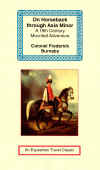
ISBN 1590480317
|
On
Horseback through Asia Minor, Frederick Burnaby - In
an age filled with romantic legends, Captain Frederick Burnaby literally
towered above his countrymen. Strong enough to carry a pony under each
arm, the dashing Burnaby enjoyed a well-deserved reputation for dare-devil
equestrian deeds based on his illegal winter ride across Russia in 1875.
“On Horseback Through Asia Minor” details how the brave Burnaby set
off in the winter of 1876, convinced he could once again outwit the
Czar’s secret police. This time Burnaby determined to ride 2,000 miles
across Asia Minor undetected. Ostensibly he was going to observe the Turks
away from European influences. However Burnaby needed only the barest of
excuses in order to undertake one of the nineteenth century's most
courageous equestrian journeys.
This book, which was published upon his return to England, details how
Burnaby eluded Russian agents in Constantinople who had distributed his
photo with orders to arrest him. Armed with a rifle, a small stock of
medicines, and a single faithful servant, the equestrian traveler rode
through a hotbed of intrigue and high adventure in wild inhospitable
country, encountering Kurds, Circassians, Armenians, and Persian pashas.
Through it all Burnaby succeeds in sharing with his readers all the
dangers and delights of this timeless equestrian adventure travel classic!
Go
to Amazon.co.uk or Barnes & Noble |
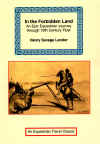 |
In the Forbidden Land, Henry Savage Landor - The nineteenth century can rightly
claim to have seen the birth and travels of a host of brave men and women
who undertook great hardships in their quest for adventure. Legendary
names come to mind like Sven Hedin, Sir Richard Burton and Isabella Bird.
Yet sadly, one name is largely forgotten today, that is Henry Savage
Landor.
Though Savage Landor became justly famous for making a series of trips to
many outlandish and dangerous places, none of his trips aroused public
sentiment like his famed journey through Tibet in the late 1890s. Fearing
her covetous foreign neighbors in British-occupied India and Imperial
China, this high Himalayan country had sealed her borders to outsiders.
Thereafter a number of Europeans, including several British explorers, had
been detected by Tibetan officials and turned back before they could reach
the nation’s isolated capital at Lhasa.
With such a geographic prize at stake, Savage Landor determined to
set off with a small group of native porters to reach the Tibetan capital,
Lhasa, by stealth. To say he failed would be too polite a term for what
occurred next.
After making his way across vast and primitive lands, the would-be
explorer was detected by the Tibetans and arrested. Once they determined
that the Englishman was traveling without the official sponsorship of his
government, the situation turned from bad to worse. Savage Landor and his
servants were first imprisoned, then brutally tortured. At one point the
explorer had his arms tied behind his back. He was then mounted on a
half-wild horse, placed in an infamous “torture saddle” that had
spikes sticking into his back, and forced to ride many miles, all the
while being slowly torn to bits by the cruel spikes.
Illustrated with hundreds of photographs and drawings, this blood-chilling
account of equestrian adventure still makes for page-turning excitement.
Go
to Amazon.co.uk or Barnes & Noble
|
 |
In the Hoofprints of
Marco Polo, Major Clarence Dalrymple Bruce -
There is an old saying among the equestrian
journeyers of Central Asia that a unique occasion will produce a special
man. When such a rare occasion arose in 1905 for a courageous horseman to
ride from Kashmir to Peking, Major Clarence Bruce stepped into the saddle
and cantered into Long Rider history.
As the 20th century dawned this soldier turned author found
himself on the wrong side of the Himalayas. Bruce had previously led a
regiment of Chinese solders. Yet fate now placed him in picturesque
Srinagar, Kashmir, thousands of miles away from faraway Peking where he
wished to be.
So Bruce did what
any Long Rider would do – the impossible.
He began by
making his way to the mountain kingdom of Ladakh. There he enlisted a crew
of “wild looking ruffians and 28 rugged ponies,” then set off on an
eight-month journey that taxed men and horses to their limits. Mounted on
his trusty 13 hand high Kashmiri pony, Bruce started by leading his caravan
over 18,000 foot high Himalayan passes, before descending onto the Devil’s
Plain in Tibet. The caravan was hard pressed to avoid detection by these
xenophobic mountaineers who were adamant about keeping foreigners like Bruce
out of their “forbidden kingdom.”
They needn’t have
bothered. Bruce had set his sights on Peking, thousands of kilometers away,
so he wasn’t inclined to linger near Lhasa. From freezing in Tibet, Bruce
next crossed into Chinese Turkistan. There he stood face to face with the
infamous Lop Nor desert.
It was in this
dreaded wasteland, as they followed “in the hoofprints of Marco Polo,” that
Bruce’s caravan suffered. Men collapsed. Ponies died. Yet they still rode
towards mythical Peking. “The ponies never failed us, no matter how
impossible the ground was,” Bruce recalled.
“In the
Hoofprints of Marco Polo” is that rare kind of book, one that reads as fresh
today as it did the day Bruce set his pen to paper. Its pages are full of
brave men and braver horses, wild mountains and picturesque tribesmen. Amply
illustrated with photos taken by the author, this equestrian travel classic
also contains an excellent appendix, complete with all of the author’s
geographical observations.
For more information, please go to
Barnes & Noble or
Amazon.co.uk. |
 |
Journey with Loshay, George Patterson -
This is an amazing book written
by a truly remarkable man!
The Long Rider
author was a Scottish medical missionary who had become Tibetan in all but
his broad Highland brand of personal enthusiasm. Relying both on his
companionship with God and on his own strength, he undertook a life few can
have known, and a journey of emergency across the wildest parts of Tibet.
In 1950 the
Communists advanced into Tibet, and a warning had to be taken to India. The
only way to achieve this was by riding through the Himalayas!
“Though it was
winter Patterson chose a 300-mile route to Sadiyah, in northern Assam, which
hardly anyone had completed before. The snows on the high passes might beat
him, but at any rate he would be travelling first-class by Tibetan
standards. He knew how to behave if the Tibetan winter would let him. If he
could find the villages he had authority to commandeer relays of food and
transport; the headmen would be (and were) beaten up if these were not
forthcoming. As for his companions of the Khamba tribe, he could beat them
at most of their own games. He was a superb horseman; he loved their
horseplay and their ribaldries; his body was an engine as efficient as
theirs for mobile operation in low temperatures at 20,000 feet; he could
forget about baths for two months as happily as they could for their whole
lives.” said London’s The Times. This classic narrative matches in
sheer virility the equestrian journey it records.
Please visit
Barnes & Noble or
Amazon.co.uk for details.
|

 |
Journeys in Persia and
Kurdistan, Isabella Bird -
A small ship made its way up
the Tigris river in the winter of 1890. Bound for Baghdad, the steamer
Mejidieh was carrying what would prove to be a historically significant load
of singular humanity.
On board were two of the most
important equestrian travellers of the Victorian era – Lord Curzon and
Isabella Bird. Though he would later become the most celebrated Viceroy of
India, George Curzon had initially made a name for himself by becoming the
first Englishman to ride through the remote Pamir mountains of Central
Asia. The Long Rider turned politician was now entering Persia to ascertain
its political importance to the British Raj.
Isabella
had already survived so many
mounted adventures that the Times of London had dubbed her “the boldest of
travellers.”
She was intoxicated with the
freedom she discovered on horseback and praised the “charm of the nomadic
life” she had chosen to lead.
The story she weaves in
“Journeys in Persia and Kurdistan” celebrates the indomitable horsewoman’s
mounted explorations in this once enchanted portion of the world. It is
replete with both the dangers and observations Bird was famed for. Meeting
the Shah of Persia by chance, cantering away from ruffians, or wandering the
bazaars in disguise were all part of her daily fare. Though her quest for
equestrian adventure was to turn her into a compulsive traveller, Isabella’s
ride across Persia remains a forgotten equestrian travel classic. It is
presented in its original two-volume set, complete with delightful drawings.
Click here to go to Amazon.co.uk or
Barnes & Noble. |
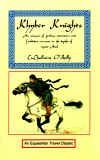 |
Khyber Knights, CuChullaine O’Reilly - Few places on Earth were more
dangerous in 1983 than Peshawar, Pakistan. With a savage war being waged a
few miles away between the Soviet Union and the Afghan mujahideen,
Peshawar had become the new Casablanca. When she wasn’t being bombed,
her narrow streets hosted a swirling human cocktail of turbaned freedom
fighters, tight-lipped foreign mercenaries, naïve foreign aid workers,
cruel Pathan warlords, and more spies than ever lurked in Berlin.
Riding through this fiery forge was CuChullaine O’Reilly. The journalist
who turned equestrian explorer was already familiar with Peshawar and the
surrounding lawless portions of Pakistan’s North West Frontier Province.
A convert to Islam, the wandering horseman was unfazed by religious
obstacles, fluent in the patois of the tribesmen, and able to partake of
any local offering from luke warm goat fat to sullied ditch water.
Setting off from Peshawar, O’Reilly began an equestrian odyssey into a
mediaeval portion of the world devoid of mercy and machinery. His mission
was to ride over some of the world’s highest mountain ranges, thread his
way through untamed tribes, and miraculously get back to war-torn
Peshawar. Yet the adventure he sought demanded a high price. His horse
died and was eaten by eager natives. He was kidnapped, tortured,
imprisoned in Pakistan’s most infamous prison, and met murderers,
bandits, whores, and princes. Yet despite these setbacks, O’Reilly never
lost hope that he would complete his mounted exploration of the remote and
dangerous heart of Asia.
Lavishly illustrated with dozens of drawings and maps, the resulting book
was compiled from the field notes, maps and diaries the author brought
back from his travels. It includes an in-depth glossary of native words,
and the largest collection of ethnological, historical, political, sexual,
and religious information ever gathered about life in Pakistan’s North
West Frontier Province.
“Khyber Knights” is thus a rare talisman against a world grown soft
and predictable. Its pages burn with a bawdy portrayal of the darkest
secrets of this cruel and beautiful region. It is a tissue of mishaps and
romantic adventures, poetic passages and natural beauties, set to the
echoing of horses’ hooves.
Told with grit and realism by one of the world’s foremost equestrian
explorers, “Khyber Knights” has been penned the way lives are lived,
not how books are written. It makes every effort to rip the reader’s
nerves to rags with its ruthless devotion to the unvarnished truth about
life in the North West Frontier.
You do not read “Khyber Knights”. You survive it! Go
to Amazon.co.uk or
Barnes & Noble.
|
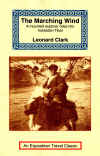 |
The
Marching Wind, Leonard Clark - Leonard
Clark was a lifelong enemy of fear, common sense, and all the other
elements that usually define “normal” people. During The Second World
War he headed the United States espionage system in China. When that
global conflict came to a peaceful conclusion, Clark turned his relentless
energy towards exploring the most dangerous and inaccessible places on the
globe. Case in point was his decision to lead a mounted expedition of
Torgut tribesmen into Tibet!
The official reason for Clark’s decision to “invade” this
mountainous kingdom on horseback in 1949 was his decision to prepare an
impregnable base for General Ma Pa-fang, a violently anti-communist Moslem
general. Yet romantic adventure ran deep in Clark, which helps to explain
why he was journeying through one of the world's least known and most
forbidding regions in the center of Asia. He was also eager to find and
measure a mysterious mountain in the Amne Machin range rumored to be
higher than Mount Everest. The only problem was that the sacred mountain
was guarded by the fearsome Ngolok tribesmen.
“The Marching Wind” is thus the panoramic story of Clark’s mounted
exploration in the remote and savage heart of Asia, a place where
adventure, danger, and intrigue were the daily backdrop to wild tribesman
and equestrian exploits.
Amply illustrated with Clark’s photographs, as well as maps he drew in
Tibet, this rediscovered classic was originally published soon before the
author’s death from injuries he received while exploring the Amazon
rainforest. “The Marching Wind” is sure to be of interest to students
of both horses and history. Go
to Amazon.co.uk or
Barnes & Noble |
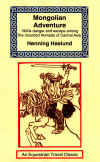 |
Mongolian
Adventure, Haslund Henning -
It
was the kind of country that sheltered nomads and harbored renegades. It
was wild. It free. It was Mongolia in the early 1920s, that legendary
magnet for foot-loose sons of the horizon like Henning Haslund.
Descended from a 19th Century Danish explorer, when young Haslund reached
Mongolia in 1923 he discovered a lost equestrian world left largely
untouched since the Middle Ages. Cruel Buriat warlords ruled a vast grass
covered kingdom inhabited by freedom-loving Mongols, tight-lipped Russian
mercenaries and the human riff-raff of a dozen countries. It was a world
where traditions of poetry and hospitality ran side by side with extreme
cruelty.
Into this realm of horsemen rode Haslund Henning. He originally planned to
journey to Mongolia to help other Danes set up an agricultural
cooperative. Yet the dust of the steppes got into his blood. There was
always some reason not to return to the boring safety of Europe, some
horse to ride, some legend to explore. “Mongolian Adventure” is
Haslund’s story of these early adventures. It is an epic tale inhabited
by a cast of characters no longer present in this lackluster world,
shamans who set themselves on fire, rebel leaders who sacked towns, and
wild horsemen whose ancestors conquered the world.
Amply illustrated, it remains a classic of equestrian adventure. Go
to Amazon.co.uk
or
Barnes & Noble. |
 |
A Ride
through Islam, Hippisley Cunliffe Marsh -
Seldom does an equestrian travel tale
require its readers to exert more intellectual caution than this superbly
written book. For herein lies a story whose message of intolerance is once
again afoot in the world. True enough, young British officer Hippisley
Cunliffe Marsh evaded plenty of danger in the way of Turkoman slave traders
and other villains as he made his wary way from Turkey to India. Moreover,
being a keen horseman, the Bengal Lancer made sure to note the equestrian
practices of the countries he rode through.
“The Turkoman horses are specially trained on little food and
less water for a month previous to an expedition; and once they start the
horse gets large quantities of a mixture of one-half barley, one quarter
maize, and one quarter sheep’s fat, all made into a soft mass of eight
pounds, on which the horse is able to do a hundred miles a day for several
days,” Captain Marsh noted.
With the decline of the Turkish, Persian, Afghan and Mughal
kingdoms, the military might of the British Raj was in its ascendancy. With
this rise in power, officers like Marsh harbored a corresponding belief in
their personal superiority. The result was a long slide into religious and
cultural bigotry.
On arriving at the holy city of Meshed, Persia, for example,
Marsh was detained at the gates by guards intent on inspecting his
saddlebags. Adhering to the belief that Europeans were exempt from local
legalities, the author, “struck the rascal holding my horse with my whip,
leaving him bellowing on the ground.”
Throughout history, the world of equestrian travel has been
peopled by wise men and women. Their journeys taught them that custom and
appearance count for little and that the perils of equestrian travel unite
all Long Riders as they attempt to survive hunger, cold and danger. Such a
bond of equestrian brotherhood has no room for the religious and political
bigotry found in this book.
Yet in this time of global woe, when the Islamic world is
being devalued by a new generation of Sahibs who cherish the myth of their
national superiority, Marsh’s “Ride through Islam” reads like a warning from
the grave. For more information, please visit
Barnes & Noble or
amazon.co.uk..
|
 |
A Ride to India, Harry de Windt -
Blame it on the Czar! If Harry de Windt, that dashing 19th
century Long Rider, had been allowed to follow his original plan, he would
have galloped to India via the Central Asian satraps of His Imperial Russian
Highness. When suspicious St. Petersburg put a halt to Harry’s Russian
route, the intrepid equestrian explorer determined to reach his goal via the
Shah’s empire instead.
What followed was a ride to remember as
Harry de Windt, lecturer, author, Fellow of the Royal Geographical Society
and equestrian explorer par excellence, saddled up in 1890 and set off to
examine the forgotten corners of Persia and Baluchistan.
The resultant journey was literally one for
the record books as the redoubtable Harry proved time and again that he
wasn’t going to be put off by a few minor inconveniences such as the
weather, which ranged from an arctic storm in Persia that froze his cigar to
his lips, to a howling desert wind in Baluchistan with temperatures nearing
120 degrees Fahrenheit!
Neither was handsome Harry bothered by the
less than ideal accommodations he discovered.
“The floor was crawling with vermin but in
Persia one must not be particular,” he casually observed.
Nor was our author overly concerned about
his physical safety, dismissing the fact that the last foreign traveler who
attempted this route had been “waylaid, robbed, tied to a tree, and left to
starve.”
Though it reads like a mounted Jules Verne
novel, “A Ride to India” is replete with the author’s scientific
observations and appendices, including details from his exact route, “road
overgrown, much camel thorn,” to Harry’s “Table of Languages in Baluchistan.”
Part science but all
adventure, “A Ride to India” takes the reader for a canter across the
Persian Empire of a romantic and bygone age.
For more details visit
Barnes & Noble or
Amazon.co.uk
|
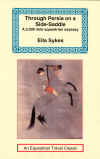 |
Through Persia on a Side-Saddle, Ella Sykes
- In
a time when polite Victorian society severely curtailed a woman’s
activities, famous female adventurer Ella Sykes risked her life on a daily
basis. Religious fanatics failed to frighten her. Forsaken, hostile
deserts never slowed her horse-bound progress.
Instead Ella Sykes rode side-saddle 2,000 miles across Persia, a country
few European woman had ever visited. Mind you, she traveled in style,
accompanied by her Swiss maid and 50 camels loaded with china, crystal,
linens and fine wine.
In her day Sykes was considered one of the bravest women alive. Today her
remarkable story, replete with rajas and rogues, camels and caravans, is
all but forgotten.
Illustrated with photographs taken by Sykes, “Through Persia on a
Side-Saddle” is a rare glimpse into a lost and romantic portion of the
nineteenth century world!
Go
to Amazon.co.uk
or
Barnes & Noble |
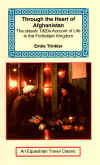 |
Through the Heart of Afghanistan, Emil Trinkler - Few
people recall today that Germany and Afghanistan were once close friends,
allied in their mutual distrust of the then still-powerful British Empire.
Within the space of a few years the British had beaten the Germans on the
battlefields of the First World War. A few years later these same English
victors used their military machine, complete with state-of-the-art
airplanes based in India, to bomb their Afghan neighbors into political
submission.
It was during the early 1920s, while both Germany and Afghanistan were
thus licking their wounds and regaining their political power, that the
German geologist Emil Trinkler made his legendary trip across the
forbidden kingdom of Afghanistan.
The Afghan king had shut his borders to the majority of outsiders, which
further heightened the kingdom’s already famous isolation.
Yet having arrived at the Afghan border via Russian Turkestan, Trinkler
wasn’t about to go back. He mounted a local horse and rode off across
the vast interior of that still-beautiful country. “Through the Heart of
Afghanistan” describes his journey. Its pages are sprinkled with the
author’s reminiscences of a Central Asian world now passed into memory.
Solitary peaks. Peaceful valleys. Sunny plains and blazing deserts are all
to be found on these loving pages.
Trinkler saw Afghanistan as she still was, asleep and dreaming in the last
stages of her long medieval slumber. Amply illustrated with a series of
period photographs, “Through the Heart of Afghanistan” takes the
reader back in time, on the back of a horse, and in the company of a
gentle man, to a country now recalled only in legends.
Go
to Amazon.co.uk
or
Barnes & Noble.
|
 |
A
Traveller on Horseback,
Christina Dodwell - In the late 1980s, Christina Dodwell moves from
a Greek Easter into a chilly Eastern Turkish spring, not improved for the
cold and hungry traveller by the fairly strict observance of Ramadan.
Retreating east, she visits the buried cities and rock-hewn churches of Cappadocia on the first of a number of hired, borrowed or bought horses, the
ideal liberating companions for her unconventional style of travel.
While the snow still clothes the eastern mountains, the Long Rider moves
further east over the border into Iran, to a ranch breeding miniature
Caspian horses near the Russian frontier, to the salt desert villages of the
south-east, and on into Pakistan for a visa renewal, the unity of her
journey maintained by the fact that she is still within the confines of the
Persian empire, as she celebrates the end of Ramadan in a festive village
near the Afghan border.
Back in Iran, she
visits the crumbling grandiloquence of lost empires at Pasargad,
Naksh-i-Rustam and Persepolis, as well as the trouble spots of yesterday and
today in the valleys of the Assassins and Kurdistan. But her journey reaches
its happiest fulfilment back in Eastern Turkey when she buys a fine grey
Arab stallion called Keyif — the name aptly means high-spirited. Together
they travel among snow caps, salt lakes, nomadic summer camps and lowland
rice paddies, across mountain country from Erzurum to Lake Van, up the
Russian border to Mount Ararat, and discover the unexpected pleasures and
hazards of remote mountain life.
The Sunday
Telegraph has described Christina as “a natural nomad” and wrote of “her
courage and insatiable wanderlust.”
Christina has the
gift to communicate the zest for adventure, and even the occasional night in
an Iranian police cell cannot dim her sheer delight in travelling to remote
and challenging places.
Visit
Barnes & Noble or
Amazon.co.uk
|
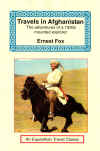 |
Travels
in Afghanistan, Ernest Fox - It
was 1937 and few places on Earth were more remote than Afghanistan. Into
this hermit kingdom went Ernest Fox. Technically searching for oil and
gemstones for the Afghan king, the American engineer discovered a
countryside unchanged since the days of Marco Polo.
For a year Fox rode a series of local horses through the mountains,
valleys, and deserts of this forbidden realm, visiting such fabled places
as the medieval city of Herat, the towering Hindu Kush mountains, and the
legendary Khyber Pass.
The equestrian engineer thus spent an exciting time on his sojourn,
exploring a country which had been a highway for history since the days of
Alexander the Great. “Travels in Afghanistan” was compiled from the
field notes, maps and sketches Fox brought back from his 2,000 mile horse
back adventure.
A lively and adventure-filled book, it provides a geographical and
historical sketch of Afghanistan, her various people, and a way of life
that was destroyed in the late twentieth century. Amply illustrated, it
remains a timeless classic.
Go
to Amazon.co.uk
or Barnes & Noble |
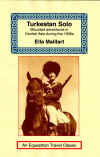 |
Turkestan
Solo, Ella Maillart - Ella
Maillart was the adventurous Swiss woman who made her name as an intrepid
explorer and one of the most remarkable woman travelers of the early
twentieth century. An amazing sports woman, she first represented her
country as the only woman competitor at the 1924 Paris Olympics in the
single-handed boat-sailing contest, then later raced for Switzerland as a
member of the international ski team.
Yet these outdoor activities only developed Maillart’s insatiable
curiosity to travel east, leaving behind the confines of her early life in
Geneva in search of the perfect life that she was instinctively seeking.
Her later adventures took her across many continents and various oceans.
Maillart sailed the Mediterranean in a yawl, traveled with famed travel
English travel writer Peter Fleming from Peking to Kashmir, explored Tibet
with a half-wild tiger-cat in search of spiritual enlightenment, and
finally drove 4,000 miles from war-torn Europe to the fabled Khyber Pass
in a battered Ford car.
Yet her solo journey through Central Asia in the early 1930s was
considered to be a highlight of her adventure-filled life. Setting off
from the Tien Shan mountains of Mongolia, Maillart rode horses and camels
to the far away walls of fabled Bokhara. “Turkestan Solo” is her vivid
account of this wonderful, mysterious and dangerous portion of the world,
complete with its Kirghiz eagle hunters, lurking Soviet secret police, and
the timeless nomads that still inhabited the desolate steppes of Central
Asia.
If any book can give its reader the ability to look back in time, this one
does, written as it was by one of the world’s foremost female equestrian
explorers. Amply illustrated, it remains a timeless adventure classic.
Go
to Amazon.co.uk
or Barnes
& Noble |

|
Växlande Horisont, J. Östrup -
J. Östrup, som studerat Arabisk och kulturhistoria, red
4.500 km. på samma häst genom Egypten, Syrien & Asien Minor åren 1891-1893.
Hans lojal Arabiska hingst “Antar” tog honom slutligen hela vägen hem till
Köpenhavn, efter en resa som satt honom I när kontakt med både historiska
stader och öknens beduiner. För att inte tala om Tscherkessiska rövare och
slugna Levantiner.
“Jag har därfor strävat att ge inte så mycket vad jag har sett, som däremot
vad jag hört; ty just på denna punkt ligger enligt min åsikt skillnaden
mellan den resande forskaren och den vanlige turisten. Vad jag sökte var
först och främst människorna själva; att leva tillsammans med dem för att
lära känna deras kulturhistoriska ståndpunkt och tala med dem, för att lära
känna deras tankar, var min väsentligaste uppgift.”
Ostrups ovanliga och intellektuella synpunkt gör detta till en reseskildring
som är mycket mer än den vanliga äventsrsboken.
Just som den homeriske sångaren samanfattads för 3000 år sedan:
“Människors städer
han såg och dem själva han lärde att känna.”
Please visit
Barnes & Noble or
amazon.co.uk.
|
Home
|